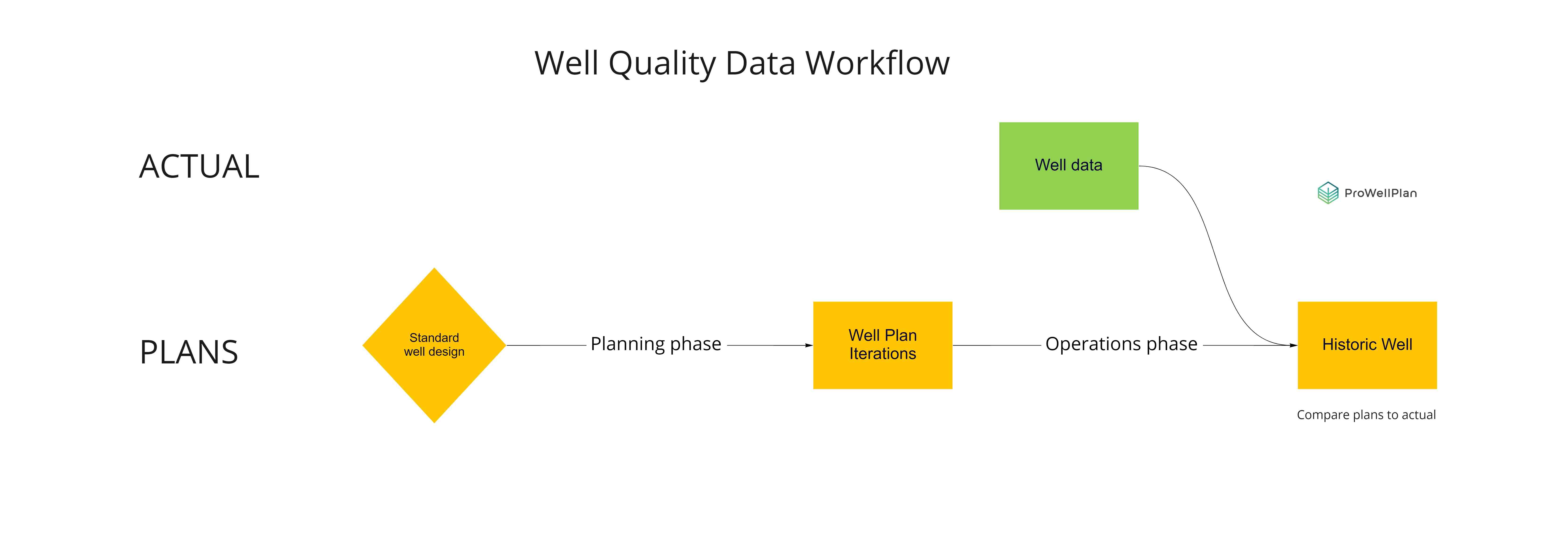End to end integrations

What happens when your applications speaks the same language?
Are you an integrator or a generator? If there are quality barriers in the flow of data, you need to step in and make sure the right information reaches the right stakeholder in the complex well planning process. For your company, you make most value when you are designing and creating plans, but too often you find yourself patching the flow of data by making spreadsheets, presentations, and having meetings to convey information.
In the data management lingo, this is called data structure and data quality, and is measured by how consistent and well formatted your data is.
Example with a known dataset
There can be many purposes of the same information, and there are different quality requirements. Say you are looking at a trajectory plan in a priority meeting for target selections. Then you are looking at decision points along a trajectory, maybe tweaking 4-5 points along the trajectory. When you bring the same trajectory into a BHA selection, you need a higher resolution of the dataset, as you want to lock in certain build sections, tortuosity uncertainty, potential exit strategies and more.
Both purposes are about the same trajectory, but with different resolutions. If you don't have a quality data infrastructure, you end up with using different datsets for the two applications, and you can't know how changes in one scenario impacts the other. That's where you become the integrator.
When your data infrastructure is built for the purpose and carries the big picture in well planning, both the detailed and general application can be performed on the same dataset.
Using your plans
When you have a quality flow of information between applications and databases, you can forward detailed plans and in-depth well reviews. And the more plans you make, the more value you create for the following operations.
In the manual operations, data flows with people as integrators, and then you always end up with information overload situations. The symptom of information overload is when operational events happens which you discussed in planning, but couldn't include in the planning workflow as it would be making the decision document too heavy to read - and sign.
In fact, nine out of ten wells have Management of Change process happens during operations because the plans didn't cover the outcomes of the well. And more than 50% of these, the planning organization predicted and discussed solutions for these events. Management of Change during operations means you are making decisions and quick iterations without the support and expertise of the planning team - and causes millions of dollars to be lost to quick decision making and gut feelings instead of facts.
Compare and review your plans
For well planning and execution, you need a data infrastructure that let you compare plans to actual, without converting data types. When the plan is a document with hundreds of variables and the result is another document with many other variables, how are you going to learn and improve?
When your plan and result data is structured the same way, you can compare your plan to actual.
You know if you agree to buy a car for 25', and the bill says 25' and the bank statement says 25', you paid what you expected. If your car is priced in weight of coins, the bill says is stated in percentage increase of manufacturing cost, and your bank statement says 125', you will have a hard time figuring out what actually happened when you got those keys in the parking lot.
The quality barriers in well planning and execution are shown in the figure below

The perfect data structure for well planning
The perfect solution for data infrastructure for well planning is when planned wells, historical wells, and ongoing wells are in the same format - which is what you get with Pro Well Plan.

Integrations with quality data
When the data is structured the for its usage and purpose, you can say all formation is stored in the same, universal language.
Then integrations becomes easy, peasy, lemon squeezy.
A secret amongst developers working with integrations is that the complex part is always structuring the data correctly, checking that the right data is available, and error handling if data is missing.
With the Pro Well Plan quality data infrastructure, we set up your integrations for you, or let you set them up yourself - it is that easy when we have already handled the data quality issues behind the scenes.

Why do we need integrations when Pro Well Plan also has the features?
The Pro Well Plan platform is made to handle well planning from the big picture, capturing all your learning and experiences from early phase to operations. But well planning can always be improved in every direction, just look at all the experts we employ in the industry.
So although we let you plan the well in a workflow where you can trust the outcomes, details will always be needed to check out in specialist applications. The map above shows some of the most frequent integrations we discuss with our customers, and these are easily set up with our SaaS infrastructure.
Say goodbye to data overload, say goodbye to reports, spreadsheets and presentations, say hello to efficient collaborations across your favorite applications and databases.
Say hello to Pro Well Plan

